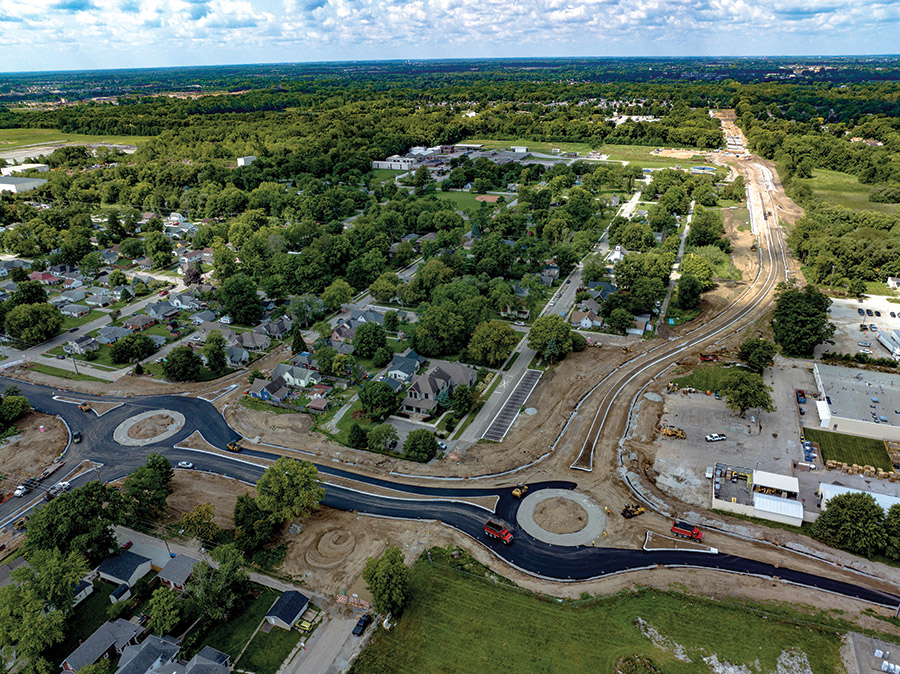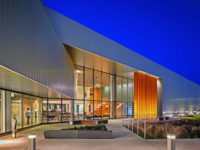Related Link:
ENR Midwest Top Design Firms 2024
Despite persistently high interest rates, inflation and ongoing labor shortages, the 114 companies that participated in ENR Midwest’s Top Design Firms survey reported more than $9.1 billion in total revenue across the 11-state region in 2023. That far exceeds the $8.1 billion reported by the 116 firms on last year’s list and the $6.5 billion reported for 2022 by 110 firms.
Steve Davidson, strategy officer and partner at engineering firm American Structurepoint, which placed 13th on the list, says all of his company’s 11 disciplines are busy, but transportation stands out.
“Two major factors are fueling the growth in transportation projects,” he says. “First, several states have enacted revenue measures to increase transportation funding and accelerate the delivery of long-planned projects. Secondly, we are midway through the implementation of the Bipartisan Infrastructure Law, which is a significant investment in the transportation sector to improve safety and enhance mobility.”
He estimates that American Structurepoint, which reported $147.83 million in revenue in the Midwest, will continue to grow revenue nationally by about 10% each year.
“With increases in population and inevitable stresses to current infrastructure, spending will have to increase to ensure the safety of residents and businesses that depend so much on it,” says William Whitaker, chief growth officer for Milhouse. The Chicago-based engineering firm was ranked 63rd on this year’s list, and Whitaker says he sees many opportunities within infrastructure and anticipates more.

American Structurepoint provided roadway design services for two new roundabouts on Eighth Street in Noblesville, Ind., as part of a multiyear plan to improve connectivity in the growing city.
Photo courtesy of American Structurepoint
Other Areas of Growth
Melanie Jefferies, chief operating officer, engineering services, for Milhouse, which reported $33.94 million in 2023 revenue, expects growth in renewable energy.
“The transition toward renewable energy continues to gain momentum, driven by environmental concerns and advancements in technology,” she says. “The Midwest, known for its vast wind and solar resources, is likely to experience continued growth in renewable energy projects [that will require] engineering expertise in site assessment, design optimization and grid integration.”
She also cites an increased interest in embracing smart city initiatives aimed at improving efficiency, sustainability and quality of life for residents. “These initiatives involve the deployment of IoT sensors, data analytics platforms and innovative infrastructure solutions, presenting opportunities for engineering firms specializing in urban planning, transportation systems and digital infrastructure,” she says.
“With increases in population and inevitable stresses to current infrastructure, spending will have to increase to ensure the safety of residents and businesses that depend so much on it.”
—William Whitaker, Chief Growth Officer, Milhouse
Another hot area in the Midwest is advanced manufacturing, a sector that continues to evolve with advancements in automation, robotics and additive manufacturing technologies, Jefferies says.
Architecture firm SmithGroup reported nearly $93 million in revenue last year and was ranked 26th on the list. The company was founded in 1853 in Detroit and has recently added 80 employees to its nationwide roster of 1,400.
There is work to keep them busy in a variety of sectors, says Tim Tracey, the firm’s vice president and Midwest region director. “In particular, we are seeing a wealth of new opportunities from new and existing clients across the higher education, health, science and technology, and urban design markets.”
A trend that Tracey has noticed among a range of clients is increased interest and commitment to climate action and resiliency. The firm’s expertise in shoreline stabilization has enabled it to partner with municipalities across the Great Lakes to control erosion and protect shorelines, he says.
While all three of these firms reported growth, they have also been challenged by inflation, which has impacted some clients’ willingness to invest in projects. “Our clients in the private sector have definitely felt the impact of ongoing inflation and have been more cautious with their spending,” Tracey says.
A diverse client base is helping SmithGroup weather those storms “and allows us to manage any short-term economic fluctuations,” Tracey says. And while supply chain delays have not impacted SmithGroup’s design process, “they have had an impact in extending project schedules,” he says.
All of the interviewed firms have put in place efforts to address the ongoing labor shortage.
“Today’s labor market continues to face a scarcity of people with engineering and architectural design skills,” Davidson says. The firm is taking a two-pronged approach to address this, which includes nurturing the skills of existing employees and encouraging young people to consider careers in the industry.
“Our firm has developed multiple in-house training programs in which employees can grow their skills and expand their career options,” Davidson says. “Secondly, American Structurepoint participates in several programs encouraging young people to explore STEM careers.”
The firm has made a $250,000 investment to launch and expand STEM training in the Indianapolis Public Schools system through the nonprofit Project Lead the Way, he says.
Likewise, Milhouse has established Milhouse Charities to support education, exposure and advancement of underrepresented youth and minorities in science, technology, engineering and math “to replenish the future pipeline of engineers,” Whitaker says.
Tracey says SmithGroup’s emphasis on having a diverse workforce helps the firm attract and retain employees. “We believe that the culture and diversity of opportunities at SmithGroup allows us to provide a differentiated offering that aids with attracting and retaining talent and avoids the impact of any labor shortages within the industry,” Tracey says.
Jefferies says solving the labor shortage is more than one firm can handle alone. “Addressing these workforce gaps will require collaboration between industry, academia and government to provide training and education programs that meet the evolving needs of the engineering sector,” she says.





